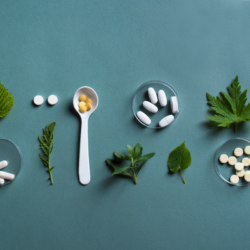Monks, bladders, bassinets, heated bricks… the hot water bottle is the worthy heir of these objects whose function was to keep warm. And yes, there was a time when electric heaters and reversible air-conditioning were the stuff of science fiction!
Today, the hot water bottle has evolved, and despite the fact that our homes are often overheated, it is still very useful.
From the good old rubber hot water bottle to those made from cherry stones or seeds, there’s something for everyone! And for those who think they’re old-fashioned or “not very glamorous” at the end of the bed, hot water bottles come in all colours and with the most original coverings.
The benefits of a hot water bottle in winter:
In naturopathy, the use of a hot water bottle is a gesture to be incorporated into daily life, particularly on these cold winter evenings, for its many benefits.
Activating circulation and relaxation
The hot water in the hot water bottle acts on blood circulation through a vasodilatation mechanism, encouraging the distribution of body fluids to the skin. This activation of circulation not only helps to relieve congestion in the internal organs, but also has a beneficial effect on the nervous system, promoting relaxation and well-being.
Supporting bodily functions
A hot water bottle applied to the liver can support its multiple detoxification functions and provide significant relief. On the stomach, it helps to soothe digestive discomfort, particularly when menstruation is painful, by providing a comforting sensation of warmth. When placed under the arch of the back, it supports the kidneys and helps to relieve muscular tension. However, it is important to note that in the case of swollen muscles, an application of cold would be more appropriate.
Versatile use for comfort and health
Hot water bottles are particularly recommended for people suffering from cold or stress, as they have a warming effect that helps them relax. It is also beneficial for people suffering from rheumatism, thanks to its ability to provide warmth and relieve joint pain.
It is essential to ensure that the hot water bottle is watertight and to protect it with a towel or cloth to avoid any risk of burning. It should never be placed directly on the head or heart. What’s more, the hot water bottle should not be applied to the stomach in the event of acute pain, such as suspected appendicitis, or to the stomach in the event of peptic ulcer.
Warmth, comfort and relaxation for everyone
Quite simply, the hot water bottle provides warmth, comfort and relaxation, accessible to all ages. Whether it’s to relax after a long day or to relieve specific aches and pains, a hot water bottle is an ideal ally for improving your comfort in winter.
In fact, as far as our furry friends are concerned, one study examined the effect of hot water bottles on body temperature during magnetic resonance imaging (MRI) examinations of dogs under general anaesthetic. It was found that the use of hot water bottles could help prevent or alleviate hypothermia. However, the study concluded that hot water bottles should not be considered as a complete method of preventing hypothermia and are not necessarily recommended for the management of body temperature during MRI examinations in dogs under general anaesthesia.
Understanding the mechanisms of therapeutic heat
Heat, as a form of therapy, has been used for centuries to relieve a variety of ailments. When a hot water bottle is applied to a part of the body, it promotes a local rise in temperature, resulting in a number of beneficial physiological reactions.
Vasodilation and improved blood circulation
Heat causes blood vessels to dilate (vasodilation), which improves blood circulation in the treated area. This increase in blood flow brings more oxygen and nutrients to the tissues, while promoting the elimination of metabolic waste products. This process is particularly useful for accelerating the healing of damaged tissue and reducing muscle pain.
One study found that patients suffering from lymphocytopenia, a condition in which the number of lymphocytes is low, had a cold external body temperature, particularly in the abdomen, hips and extremities. These patients were recommended to use a hot water bottle, particularly for the cold extremities, to improve their feeling of ‘cold’. The study showed a significant increase in the number of lymphocytes in patients after using hot water bottles, suggesting that this simple method could improve lymphocytopenia.
Effects on the nervous system
Heat also has a soothing effect on the nerves. By reducing the transmission of pain signals to the brain, it can help to reduce the perception of pain. What’s more, the pleasant sensation of warmth can contribute to a general state of relaxation, reducing stress and anxiety.
Naturopathic use
In naturopathy, the hot water bottle is seen not just as a means of keeping warm, but also as a therapeutic tool in its own right. It is often recommended for :
- Relieve menstrual pain: Applied to the lower abdomen, it can help relax uterine muscles and ease cramps.
- Promoting digestion: Applied to the abdomen, it can stimulate digestion and relieve bloating.
- Reduce muscular tension: Placed on tense areas, it helps relax muscles and reduce pain.
Optimum use of the hot water bottle for health
To get the most out of your hot water bottle, follow these practical tips:
- Choose the Right Hot Water Bottle: Opt for a quality hot water bottle that retains heat well and is safe to use. Rubber hot water bottles are traditional, but there are also modern options such as gel or seed hot water bottles.
- Ideal temperature: Fill your hot water bottle with hot, but not scalding, water to avoid the risk of scalding. The ideal temperature is around 40 to 45 degrees Celsius.
- Application time: Apply the hot water bottle to the affected area for approximately 15 to 20 minutes. Avoid using it for long periods to prevent the risk of skin burns.
- Use as a preventative measure: As well as relieving pain, the hot water bottle can be used as a preventative measure, for example before exercise, to prepare the muscles for exertion.
References:







